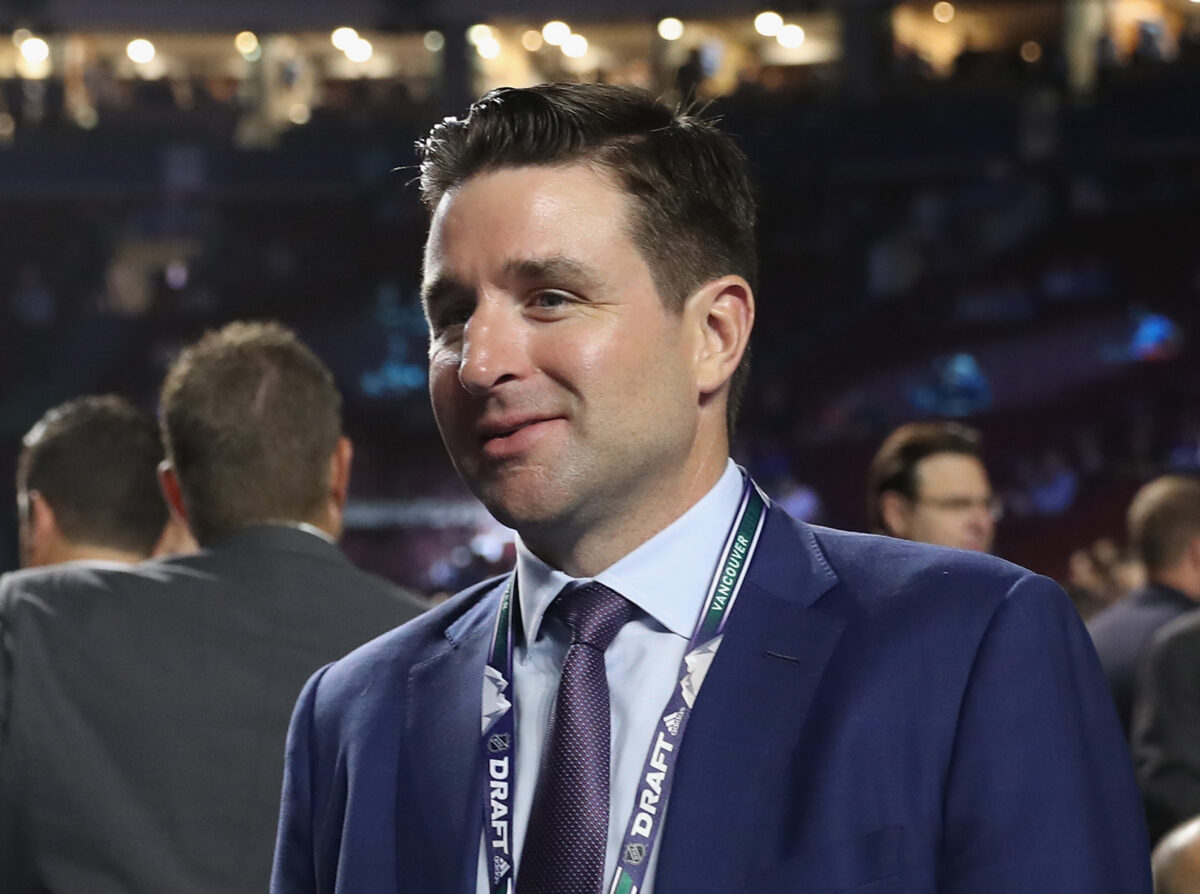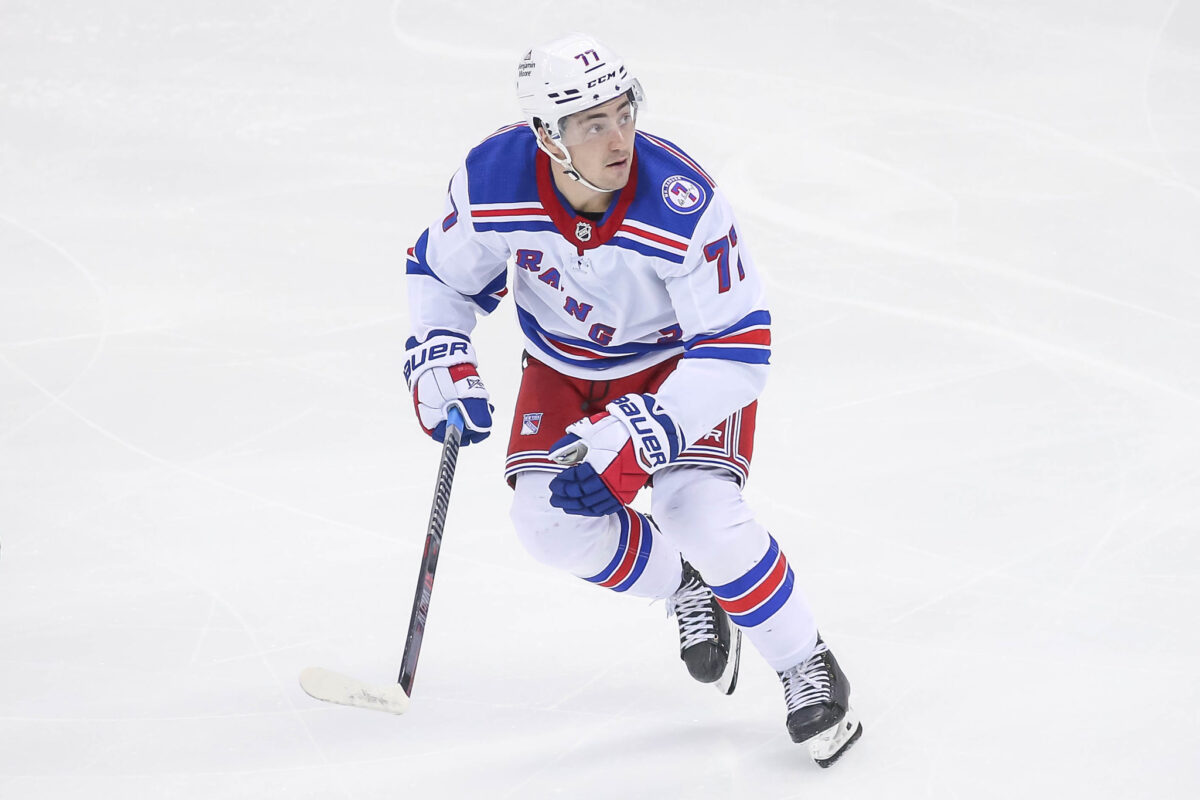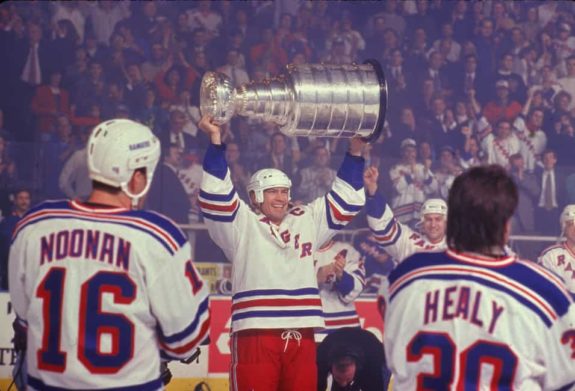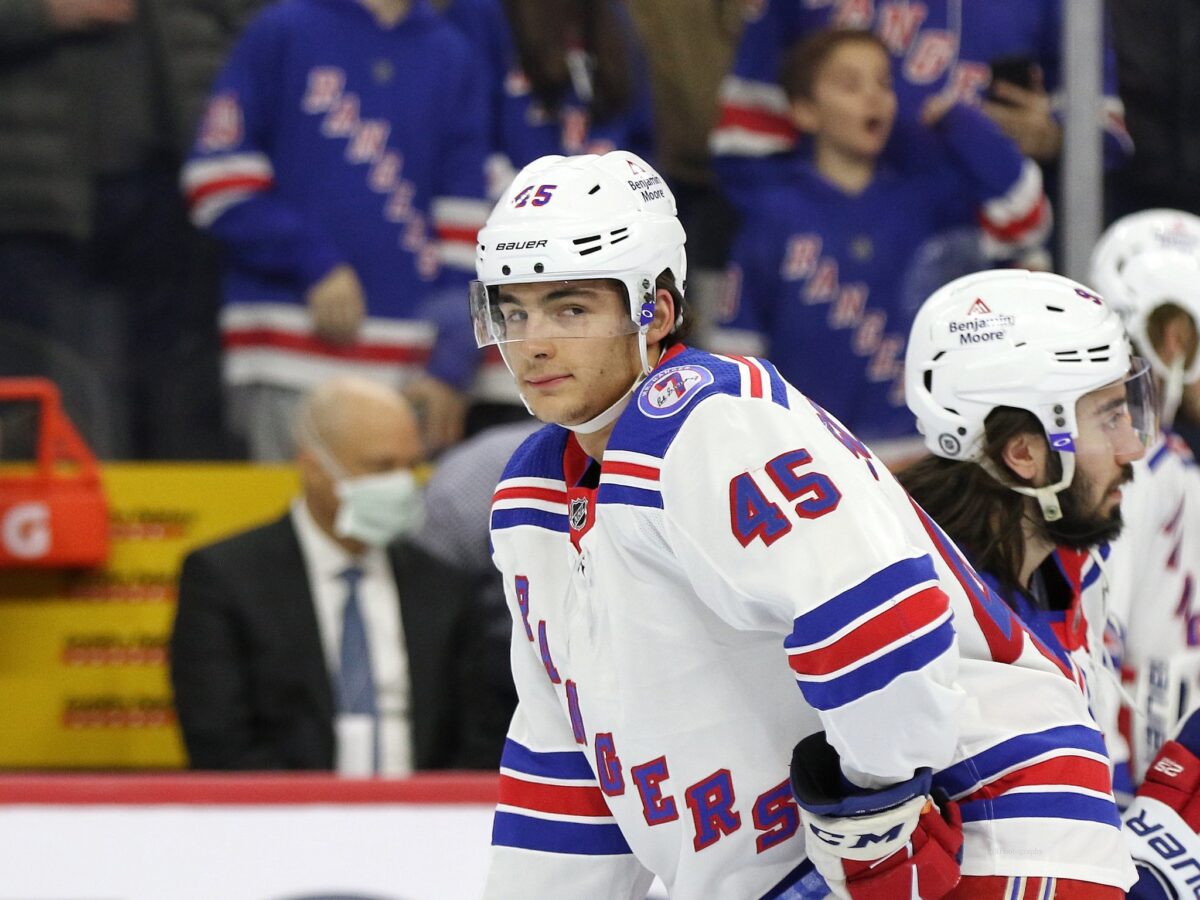The New York Rangers were riding high as they approached the 1994 trade deadline, leading the NHL en route to winning the Presidents’ Trophy as they sought to end a 54-year Stanley Cup drought. General manager Neil Smith, however, wasn’t convinced his star-studded team had the right roster mix to capture a championship, and in a series of trades hours before the cutoff, added four key new players. The rest, as they say, is history.
Like their brethren of two years prior, who thanks to their new acquisitions went on to capture the Cup, the Rangers of 1995-96 had seemingly put themselves into position to compete for another championship. Despite a 2-5-3 (ties) slump, they sat 18 games above .500 just before the deadline and had looked like a serious threat all season. Smith, however, again wasn’t convinced his team had the right roster mix to go all the way, so he acquired five players before the deadline, hoping those trades would have the same effect as his moves in 1994 did.

That didn’t happen, as the GM’s additions proved to be an ill fit that time, throwing off team chemistry and draining the roster of young talent in a series of swaps that Smith admitted later amounted to a major mistake. The Rangers did manage to pull off a 5-2-0 run shortly after the trades but then limped to the end, dropping five straight to end the regular season. Though they defeated the Montreal Canadiens in the first round of the playoffs, injuries, a lack of cohesiveness and a loss of offense due to the deadline deals cost them against the Pittsburgh Penguins in the second round, as they fell in five games.
This season, the New York Rangers were riding high just before the deadline, having defeated top Eastern Conference contenders in the Tampa Bay Lightning and Carolina Hurricanes on the road on back-to-back nights, giving them a 40-18-5 record. General manager Chris Drury, however, wasn’t convinced his team had the right mix to go deep in the playoffs and acquired four new key players before the cutoff, seeking better balance for a top-heavy lineup.
The final analysis of this team’s deadline transactions, of course, can’t be written yet. The Rangers, though, are hoping that Drury’s moves work like Smith’s of 1994 and not Smith’s of 1996.
Rangers Adding Four Newcomers to Tight-Knit Dressing Room
It’s far too early to judge the trades that delivered forwards Frank Vatrano, Andrew Copp and Tyler Motte and defenseman Justin Braun for a bunch of draft picks and center Morgan Barron, but if Smith’s contrasting results from 25-plus years ago should teach us anything, it’s that bringing new guys into an established situation is disruptive – it changes the dynamic of the roster, the dressing room and the familiarity on the ice. Whether that disruption turns out to be a positive or negative one remains to be seen.
While these Rangers did seem to need reinforcements, particularly up front, Drury has taken on the risk of messing with what has been his club’s most important attribute in this resurgent season: A tight group of players that has made finding ways to win and never giving up the hallmark of their team. The chemistry and fight of these Blueshirts, seemingly so committed to each other and the mission from the outset of training camp, have kept them from losing three straight all season.

Now, it’s almost as if the Rangers will be conducting a mini-training camp over the next few weeks to integrate the newcomers as they look to maintain the sense of togetherness that has made them larger than the sum of their parts – something that’s hardly guaranteed to continue.
The Rangers of 2021-22 don’t at all represent a perfect parallel to the 1993-94 or 1995-96 squads. Those clubs were veteran-laden, all-in teams that were chasing championships. This group, in contrast, is still probably at the end of a rebuilding effort, with plenty of youth sprinkled throughout, and might be ahead of schedule to make a deep postseason run.
Related: 1995-96 Rangers: Sad End to Stanley Cup Hopes
Yet those two trade deadlines from the not-so-distant past remain relevant today. The 1994 group was able to seamlessly incorporate Stephane Matteau, Brian Noonan, Glenn Anderson and Craig MacTavish into its ranks despite those deals changing not only the makeup of the team, but its style, transforming the Rangers from a speed-and-skill outfit to one of grind and strength that was better suited to the playoffs. All four players made crucial contributions during the championship run.

The return on investment wasn’t nearly as good two years later. That team had added Ray Ferraro as a free agent in the offseason to handle second-line center duties to great results, and young defenseman Mattias Norstrom and center Ian Laperriere had shown promise. It was clear that the roster had been well-constructed, the bonds between teammates obvious – not unlike the 1993-94 Blueshirts.
Smith, trying to follow the blueprint and create the same magic of the championship season, then sent away Ferraro, Norstrom and Laperriere as the principles in a deal to obtain Jari Kurri, Marty McSorley and Shane Churla from the Los Angeles Kings. Two weeks earlier, Smith had traded for Bill Berg and Sergio Momesso from the Toronto Maple Leafs for Nick Kypreos and Wayne Presley.
New Rangers Have Shared History With Each Other, Trouba
Aside from it being an obviously lopsided talent exchange – all five acquired players were fading veterans, and McSorley, Momesso and Churla were known mostly as fighters – the trades upended the composition of the team that, as with this season, had been critical to its success. Those Rangers never recovered from turning over a sizeable portion of their lineup to accommodate poorly-fitting parts, and consequently were no longer serious contenders to win another Cup that season.
Again, the deals made by Drury leading up to Monday’s deadline hardly align perfectly with the head-scratching moves Smith undertook 26 years ago – and this space was used recently to advocate for Drury’s aggressive approach. Copp, Motte, Vatrano and Rangers alternate captain Jacob Trouba go way back, having known each other as kids and/or having played together with the U.S. National Development Team Program or in college along the way.
Also, it’s not as if the four new guys are past their primes or lacking in talent. Copp, a versatile and dynamic forward, was sought by numerous teams, while Vatrano is a quality player who was buried on the Florida Panthers’ deep roster. Motte should, in theory, provide much-needed depth, forechecking and penalty killing from the fourth line, while Braun is an experienced playoff performer who is still playing at a high level at age 35.
Yet time will tell whether that familiarity, history and ability leads to a successful assimilation of four players into a group that rode its camaraderie and cohesion toward the top of the East before the deadline. It may very well work – perhaps not as well as it did in ’94, when the Rangers didn’t miss a beat – but it could take some time for everything to jell, and, the Blueshirts hope, make them a better club for it.
Will Current Ranger Regulars Handle Role Changes Well?
The nightmare scenario, of course, is a takeoff on 1996, when the folly of the deadline trades quickly became apparent, the ethos of a well-performing club irreversibly damaged, leaving it worse off instead of better. It’s worth remembering that team captain Mark Messier was plenty familiar with former teammates Kurri and McSorley, with whom he’d won Stanley Cups with the Edmonton Oilers, and that had no effect on those trades working out for the Rangers.
Current players such as forwards Dryden Hunt, Kevin Rooney and Ryan Reaves, previously regulars, may now have to battle for their spots (Rooney, out with an injury, has centered the fourth line all season). Impressive rookie defenseman Braden Schneider was the odd man out in the Rangers’ first game after Braun’s acquisition, and then back in for Friday’s 5-1 victory over the Pittsburgh Penguins. Will coach Gerard Gallant have to regularly inform the 20-year-old, who’s supposedly a near-future staple on the blue line, that he’s a healthy scratch through no fault of his own?

How well will all of that play in the dressing room? Will Gallant find a happy medium for his deeper roster, or could the sudden competition and scarcer minutes result in chemistry-killing resentment? Were the Rangers just fine as they were leading up to the deadline, their resilience and close-knit collective persona able to overcome their relative lack of depth? Did they bring in too much help, rather than opting for just a targeted acquisition or two?
Or will players respond positively and raise their levels with playing time no longer guaranteed for many on a roster that for much of the season, endured more than its share of personnel shortages?
The Rangers looked perhaps predictably disjointed in their first game with their new quartet in the lineup, losing 7-4 to the New Jersey Devils on Tuesday. The results were infinitely more impressive in Friday’s rout of the Penguins, with Copp, Motte and Vatrano all making contributions.
The 2021-22 Rangers are unquestionably more talented after Drury’s ostensible upgrades. After all, the Blueshirts’ competitors in the East upgraded too. For the next couple of weeks, Gallant will experiment with his new toys, searching for the most effective lineup combinations. It’s probably far too much to expect this latest group of deadline additions to match the wildly successful deals of 1994, and fair to anticipate them delivering better results than the doomed 1996 trades did.
Are these Blueshirts now an improved team overall? The answer will likely reveal itself sooner than most people think.